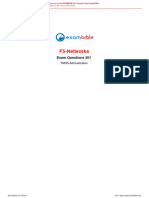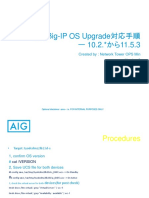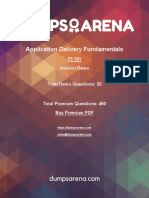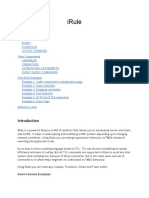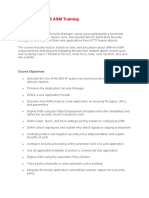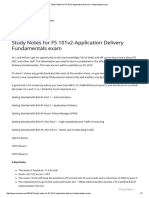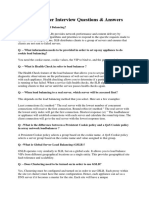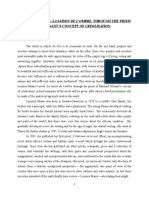0% found this document useful (0 votes)
513 views13 pagesBIG-IP LTM Setup & Management Guide
This document provides an overview of several chapters related to configuring and managing F5 BIG-IP devices. It discusses license keys, profiles, persistence methods, the Traffic Management Shell (TMSH) hierarchical structure and components, and selected topics like Always On management, iRule structure and events.
Uploaded by
Puneet GuptaCopyright
© © All Rights Reserved
We take content rights seriously. If you suspect this is your content, claim it here.
Available Formats
Download as DOCX, PDF, TXT or read online on Scribd
0% found this document useful (0 votes)
513 views13 pagesBIG-IP LTM Setup & Management Guide
This document provides an overview of several chapters related to configuring and managing F5 BIG-IP devices. It discusses license keys, profiles, persistence methods, the Traffic Management Shell (TMSH) hierarchical structure and components, and selected topics like Always On management, iRule structure and events.
Uploaded by
Puneet GuptaCopyright
© © All Rights Reserved
We take content rights seriously. If you suspect this is your content, claim it here.
Available Formats
Download as DOCX, PDF, TXT or read online on Scribd
/ 13
















